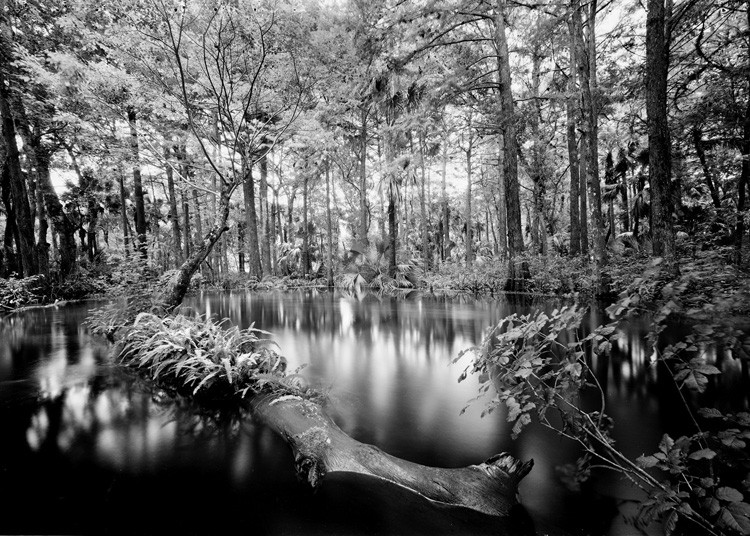Coming Up at Florida Tech’s Foosaner Art Museum: Art of Conservation(ism) Beginning Aug. 10
MELBOURNE, FLA.—The Foosaner Art Museum, Florida Institute of Technology, will present The Art of Conservation(ism): Works from the Permanent Collection Aug. 10–Oct. 13.
The exhibition explores the concept of conservation from dual vantage points: from artists who create works addressing environmental issues as well as the care museums take of their collections. The exhibition features works by artists from the museum’s permanent collection and highlights the museum’s commitment to conserving works in the collection for the benefit of future generations.
The museum holds a significant number of works by the two artists featured in the exhibition: prints by Earl Howell Reed (American, 1863-1931) and photographs by Clyde Butcher (American, b. 1942).
Reed dedicated himself to the protection and preservation of the sand dunes of Northern Indiana through words and images. He was a successful business man who took up etching as a pastime then became a self-taught artist. In the late 1890s, he frequently traveled to the sand dunes of Northern Indiana, a wilderness at that time, and lost himself in the natural world. In 1906, after working almost 20 years at the Chicago stock market, Reed decided to leave the business world and become a full-time artist. Over the next 25 years, Reed devoted his time to sketching and capturing the unique beauty of the dunes. He published a series of books, most of them illustrated with drawings and his own etchings in support of conserving the dunes. His etchings garnered nationwide acclaim, making Reed a leader among Chicago artists.
Clyde Butcher majored in architecture and enjoyed a successful wholesale color photography business in California. Lured by the beauty of Florida and a desire to pursue fine art photography, Butcher sold his business and moved his family to the East Coast. A chance encounter led to his first exploration of the Everglades and he was captivated. But a family tragedy shifted Butcher’s focus to black and white photography. According to Butcher, with the hope of regaining his serenity and equilibrium, he fled to the wilderness where being close to nature was a spiritual, healing experience and a catalyst for his commitment to conservation.
Besides displaying his work in public spaces, Butcher has worked with a number of environmental groups and government agencies, using his art to preserve the Florida Everglades. Butcher’s deep appreciation for nature has inspired him to work for the conservation and preservation of the environment.
The Foosaner Art Museum is located at 1463 Highland Ave. in the Eau Gallie Arts District of Melbourne. It is open Tuesday through Saturday, 10 a.m. to 5 p.m., except Thursdays from 10 a.m. to 7 p.m.; Sundays from 1 p.m. to 5 p.m. General admission is $5 for adults, $2 for children and students with ID and free on Thursdays and always for Florida Tech faculty, staff and students with their ID. Call (321) 674-8916, or visit foosanerartmuseum.org, for more information.
Related Programs:
Conserving the Indiana Dunes: The Etchings of Earl H. Reed
A visual lecture by Gregg Hertzlieb, Director/Curator of the Brauer Museum of Art at Valparaiso University
Saturday, August 10 at 10:30 a.m. in the Harris Community Auditorium
The Preservation and Care of Fine Art Works on Paper
A lecture by Jody Carter, owner of Art Expressions
Thursday, August 29 at 10:30 a.m. in the Harris Community Auditorium
What You Need to Know to Preserve Your Vintage Photographs
A visual lecture by Walter A. Johnson, Photographic Historian, Retired Professor of Photography, Ohio State University
Thursday, September 12 at 10:30 a.m. in the Harris Community Auditorium
Image credits:
Clyde Butcher, Loxahatchee River 1, 1995. Silver print, 26 x 30 inches. Permanent collection of Foosaner Art Museum, Florida Institute of Technology.
Earl H. Reed,The Tryst,c. 1915. Etching, 10 x 8 inches. Permanent collection of Foosaner Art Museum, Florida Institute of Technology.







